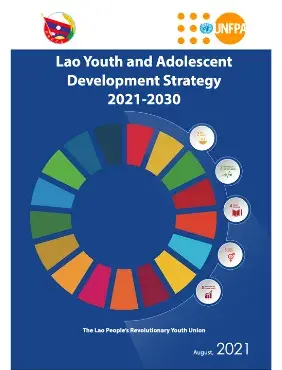In general, global and regional economic growth is slow and uncertain. The economies of the United States of America, European Union and People’s Republic of China grew at a slower pace than expected. Fortunately, the economies of Southeast Asia (Thailand and Vietnam), which are major trading partners of Lao People’s Democratic Republic (PDR), continue to grow well (MPI, 2017). However, unemployment is a major issue for youth around the world. According to the United Nations Youth Report 2015, unemployment affects more than 73 million youth around the world. In some developed countries, the youth unemployment rate has climbed above 50%. In low- and middle-income countries, underemployment in the informal sector is considered the primary employment challenge faced by youth (UN Youth Report, 2015).
Globally, youth participation in decision-making processes related to their lives is relatively low. As a group, youth are not adequately represented within formal political structures and have no clear direction, as evidenced by the low rates of parliamentary involvement and political participation in recent years. Over the past few decades, youth have been gradually moving away from engagement in institutionalized structures. At the same time, the rise of social media and the advance of new information and communications technology (ICT) and mobile technologies have provided youth with greater opportunities to engage.
As youth face delayed or fractured entry into the labor market, governments are focusing on promoting youth entrepreneurship. Entrepreneurship has the capacity to provide many youths with real employment possibilities and opportunities (World Youth Report, 2015). All initiative and skills development come through both formal and informal education. Education is universally acknowledged as the key to development and improving youth livelihoods. Therefore, many countries prioritize education as the key to other areas of development. The global community has developed and adopted the Millennium Development Goals (MDGs) and Sustainable Development Goals (SDGs), which address the development of adolescents and youth. Furthermore, there are global development programs designed specifically for youth. However, despite improvement in primary education in developing countries, secondary education and higher education has not made good progress. Globally youth and adolescents face many issues in relation to their health and well-being, particularly sexually transmitted diseases (STDs), alcohol consumption, substance abuse and other issues. This is because of their poor sanitation, poor basic hygiene and persistent risky behaviors particularly in developing countries (UN Youth Report 2015).


